Last Chance: The Annual Orchid Show Soars at the New York Botanical Garden
The vibrant colors of Mexico come to NYC for a unique Orchid Show at NYBG!



Hanging wooden book bindings used as a prop in a school play.
The Grolier Club, located on East 60th Street in Manhattan, is America’s oldest and largest society for bibliophiles and graphic art enthusiasts founded in 1884. Once you step inside, the reverent silence, almost library-like, cuts out the noise and bustle that defines Midtown. On the second floor is an interesting new exhibit that showcases “blooks”: book-looking things that can be anything except actual books. The exhibit, titled Blooks: The Art of Books That Aren’t, showcases the wonderful, antique collection of Mindell Dubansky’s book-shaped objects.
Dubansky has always been fascinated by fake books, but started seriously collecting about two decades ago when she saw a small book carved from a piece of coal bearing the name of a young boy who died in mining accident in 1897. It struck a chord in her and since then, has been a fervent collector of blooks (a term she coined).
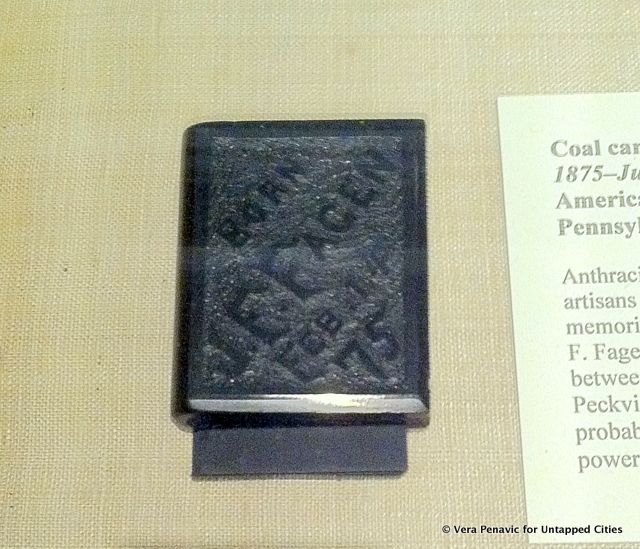
The blook that started it all: the memorial to the young man who died in a mining accident.
Yesterday afternoon, we attended a tour of the exhibit led by Dubasnsky. She explained that the collection is a broad selection of blooks to show people how rich and huge the subject is. The space, a beautiful, old library is filled with an odd collection of books that instead of being filled with paper and ink, are filled with objects ranging from flasks and recipes to matches, board games, and Polly Pockets.
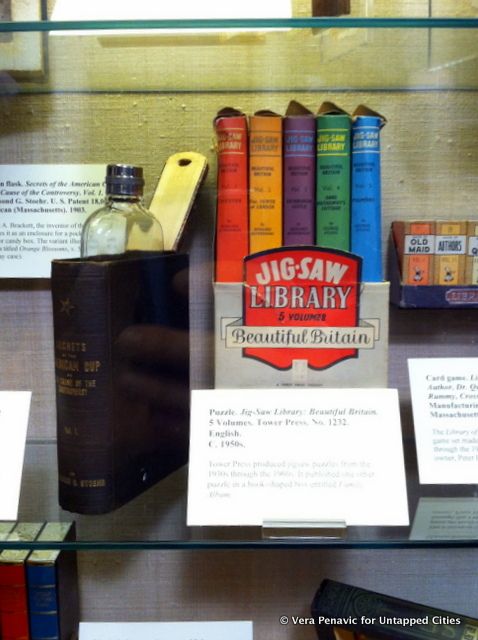
Blooks holding flask (left) and games (right).
If you’re still having trouble visualizing what exactly a blook is, think about how in movies people cut out a section of the Bible and hide a small flask in there. That’s the general idea. But it’s not restricted to being a book that holds something. They could be a match box that’s shaped like a book. Dubansky herself was wearing two blooks: a kimono with a book pattern, and a small, silver match or stamp box in the shape of a book.
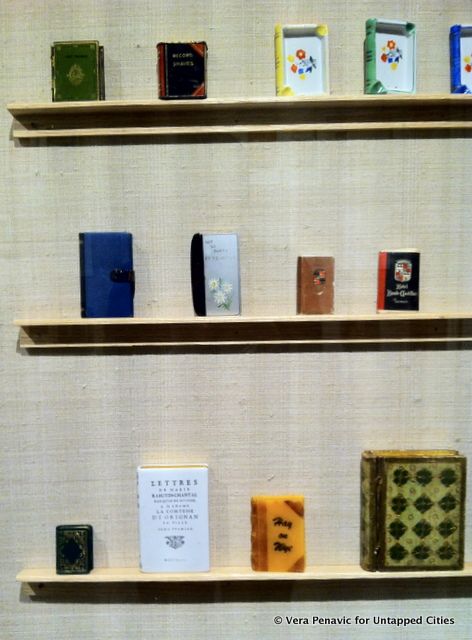
Minatures for small object, like matches.
The exhibit is arranged thematically to get visitors to understand the subject better. Themes, noted on cards, range from Food and Candy, Grooming and Fashion, to Stimulating Substances, Religion, and Safes and Banks. Each blook itself gets a card explaining its origins, materials, and use so that there is no confusion. Dubansky noted that she doesn’t collect one type of blook, rather, she likes having one of each which is why this showcase has a variety of objects. However, she does have a favorite: the Gag books. They are books, with covers and binding, but inside, there’s a rectangular cut where the paper should be containing the punch line of a joke.
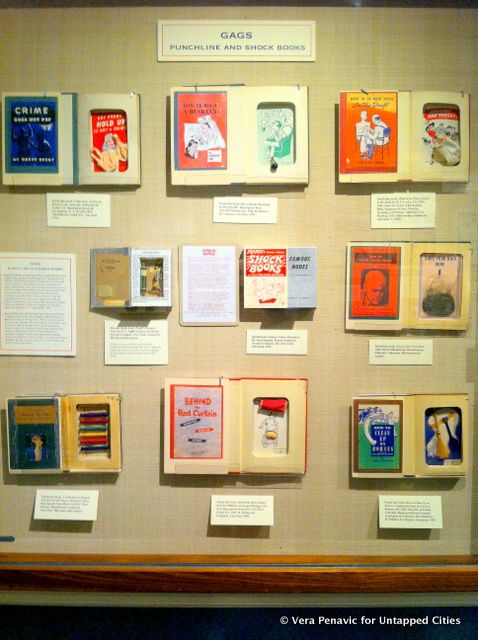
Wall of gag books.
Interestingly enough, these are not an American phenomena. Dubansky’s collection samples pieces from the United States, Europe, and Asia. A curious example would be a vintage children’s bento box. What’s more, these objects are not a thing of the past. The cabinet holding Games and Toys gives a perfect example of a modern-day blook: A beautiful 19th century French language game sits atop a shelf over a Polly Pocket blook from the ’90s showing that these objects, though strange and kitschy, stand the test of time and evolve with culture.
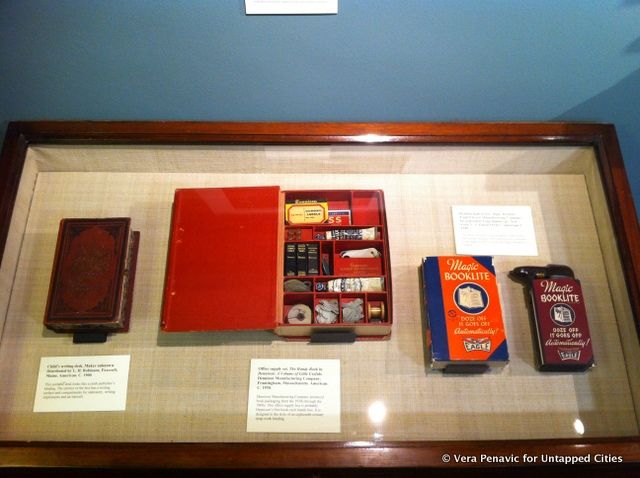
Vintage children’s bento box.
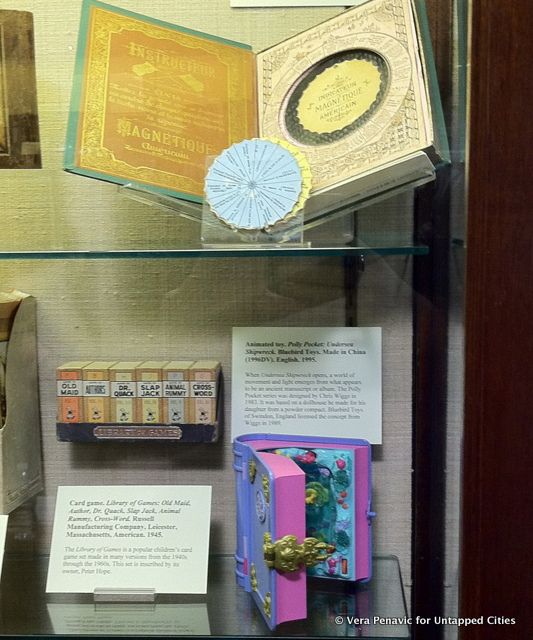
Polly Pocket game (bottom) and 19th-century game (top).
Dubansky explained that she wanted to surprise people with her collection, get imaginations going, and inspire book artists and book historians to appreciate what these fake books are. They reflect the worlds that people want to enter, much like an ordinary book does. It was a hard won, hard earned effort to get her collection together and shown. But the effort was worth it. After all, this is Dubansky’s fantasy book collection. Ultimately, a unique exhibit like this speaks to the diversity of these blooks but also, as she puts it, “to the whimsical love and kitschiness people love about books.”
Very few museums show these kinds of objects, so for a chance to see something different, stop by the Grolier Club. The exhibit will run until March 12, 2016 in the second floor gallery and Mindell Dubansky will be leading tours every Thursday from 1:00-2:00pm during the run of the whole show. The Grolier Club is located at 47 East 60th Street in Midtown.
Next, check out 22 of NYC’s best specialty bookstores and a recap By the Decade, 11 Great Fiction Books Set in NYC 1900s to 2000s.
Subscribe to our newsletter